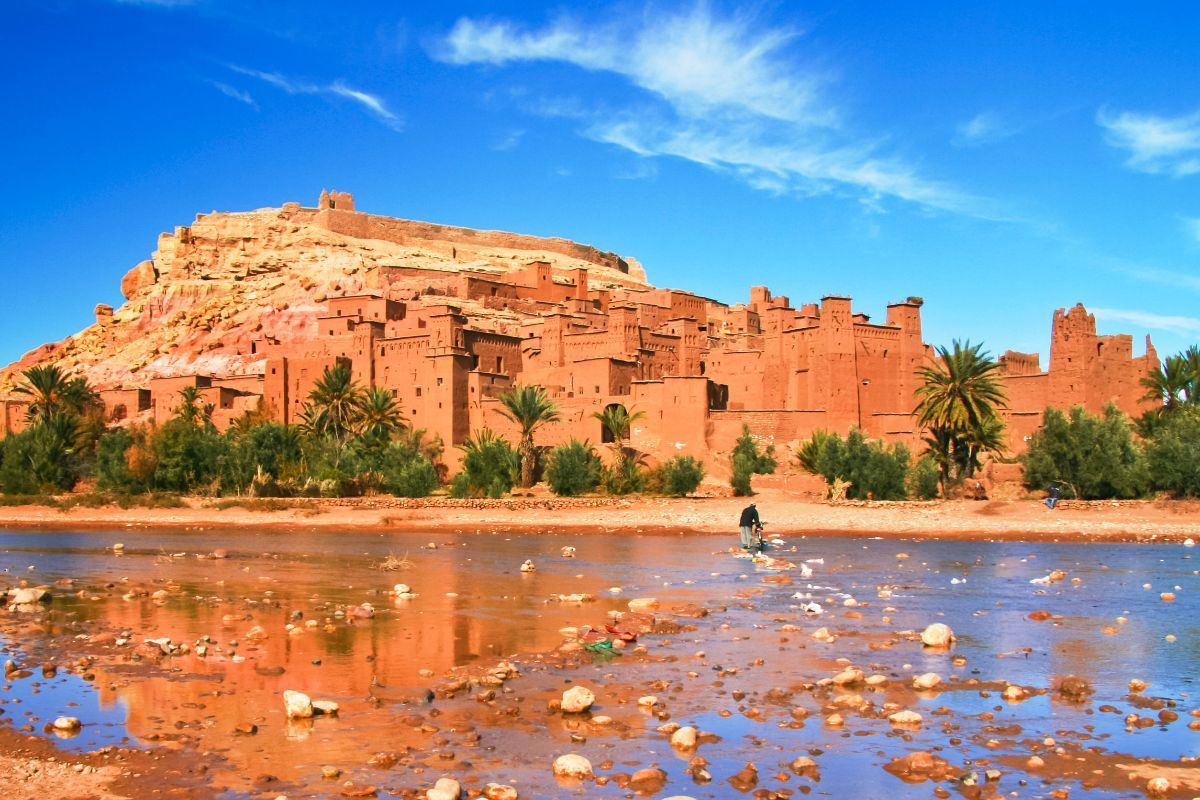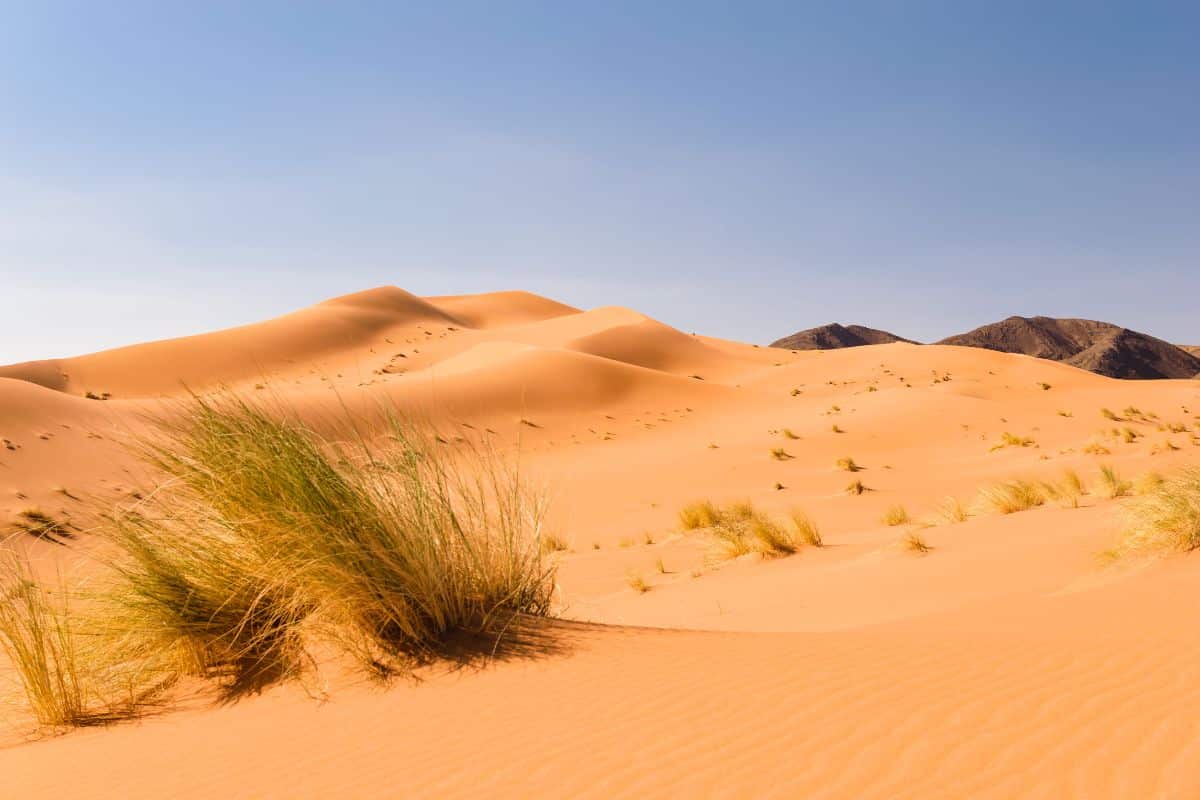The Sahara Desert is a major destination for many people traveling to Morocco. But as it happens in the great journeys, the beautiful thing is not only the goal, but also the journey to get there and to return from there. And that is what the traveler will have in mind when he crosses the Atlas Mountains and enters this vast terrain dotted with small villages, green oases, orange cliffs, ancient castles … and thousands of surprises.
Regardless of the administrative divisions of the terrain, two major geographical zones can be distinguished south of the Atlas: the pre-Saharan area and the Sahara desert proper. And they are two areas that, by the way, complement each other perfectly on a road trip.
The name ‘pre-Saharan area’ refers to the territory that precedes the purest and most arid desert. This pre-Saharan area begins at the foot of the Atlas, on its southern slope, and includes some large valleys, such as the Dades and the Draa, as well as other small secondary valleys connected to it.
These valleys have their own personality, but also a series of common characteristics:
These valleys are a must for those traveling to the desert from the other side of the Atlas. In the circular circuits, they allow the intelligent option of traveling one on the way out and one on the way back, so that the group can visit more interesting places during their trip.
As these valleys advance southward, their watercourse becomes scarcer until it disappears. And with it, the oases also disappear, a sign that the purest Sahara has been reached. Here, the towns are also shrinking in population and size, giving way to small villages that, in some cases, are only accessible by sandy tracks.
It is therefore a favorable terrain for the most ancestral traditions to be kept alive and accessible to those who come to learn about them: Berber and sub-Saharan musical rhythms, handmade pottery, the use of the dromedary as a means of transport, etc.
But if there is an element that is related to the Sahara desert in all its essence, those are the ergs, that is, the dune fields formed by fine sand, which the wind molds at will resulting in wavy and regular shapes. In Morocco, the three major ergs are:
And so that the traveler can experience firsthand the feeling of spending the night in the desert, traditional tent camps have been set up, which are the semi-permanent canvas tents used by the nomadic Berbers as their home.

Large valley stretching between the surroundings of Tinghir to the east and Ouarzazate to the west. The presence of kasbahs is very significant here, with particularly rich decoration, but also the whimsical shapes of the cliffs and canyons, with winding roads and walls coveted by climbers. It is the one you will have to travel to go to or return from Merzouga.

Extensive valley that goes from Ouarzazate in the north to Zagora in the south, approximately. It was the most popular on the caravan route between Marrakech and Timbuktu, and is the one you should take to get to or from Zagora. It highlights the extent of its palm groves and cultivation areas, as it is one of the most fertile areas of the region, especially around Agdz.

Ksar or fortified village declared a World Heritage Site by Unesco, which has been a film set for important films and series such as
Game of Thrones
. Today it is visited by numerous tourists, eager to admire one of the best examples of the popular defensive architecture of the Berber civilization.

The largest dune camp in Morocco, in the heart of which are located camps of great comfort and exclusivity. The town that gives it its name has become a lively epicenter with numerous services for travelers seeking unique and singular experiences.

Small city of military origin in the twentieth century and currently growing at the pace of international tourism. For this reason, the variety of services is increasing, including lodging and 4×4 excursions. Some of them lead to the dunes of Erg Chegaga, less frequented than the others because of their remoteness, which doubles their charm.

A village where only a few dozen families live and where there is no paved road. This reflects its isolated character, just what many travelers in search of disconnection are looking for. It is also a good place to interact with the local people, who still preserve ancestral ways of life.
Fill out the form below to receive a free, no-obligation, tailor-made quote from an agency specialized in Morocco.
Travel agency and DMC specialized in private and tailor-made trips to Morocco.
Mandala Tours, S.L, NIF: B51037471
License: C.I.AN-187782-3